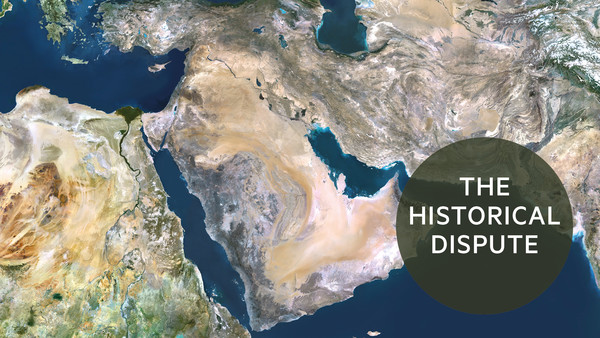What caused the schism in Islam?
The schism that led Muslims to split into two main denominations, Sunni and Shia, dates from the 7th century — it is almost as old as the religion itself. It is based on a succession dispute that erupted in Medina, the capital of the first Islamic state in the Arabian peninsula, over who should lead the Muslims after the death of the Prophet Mohammed in 632 AD.
The Shia support Ali ibn Abi Taleb, the prophet’s cousin and son-in-law, who was initially passed over for the succession. Ali eventually became the fourth caliph and ruled from Medina for five turbulent years until he was killed in 661. During his reign, he faced a challenge from Muawiya ibn Abi Sufyan, the founder of the Umayyad ruling dynasty, who succeeded him as caliph.
Shi’at Ali — or the partisans of Ali — are those who accepted that leadership of the Muslim community should remain in the prophet’s line and who subsequently supported the claims of Ali’s sons Hassan and Hussein — both of whom led failed rebellions against the Umayyads.
The Sunni are those who did not support Ali’s claim: they now make up the majority of the world’s Muslims.
Hussein, the great martyr hero of Shia Islam, was killed with his small band of supporters in the Battle of Karbala in Iraq in 680. Since then, Shia have regarded Sunni rulers as usurpers and recognise as religious and political leaders only their own imams who are descended from the prophet through Ali and Hussein.
What is the geographical distribution of Sunni and Shia?
Of the world’s more than 1.5bn Muslims, 10-15 per cent are Shia, although there are no completely reliable figures. Iran is the world’s largest Shia nation: some 90 per cent of its people are Shia. There are Shia majorities in Iraq, Bahrain and Azerbaijan. In Lebanon, they are a large and politically powerful minority, forming the largest single religious group. There are Shia minorities in Kuwait, Saudi Arabia, Turkey and Syria, where the Alawi sect of the ruling Assad family is Shia. In Yemen, Shia of the Zaydi sect make up to 45 per cent of the population. The Houthis of Yemen, currently the target of a Saudi-led military campaign, are Zaydis. Indonesia is the largest Sunni nation in the world. Elsewhere in Asia, there are Shia minorities in Pakistan, India, Afghanistan, Sri Lanka and Myanmar.
Do Sunni and Shia believe in different versions of Islam?
There are big similarities and differences stemming from what was essentially a political schism spilling over into different intellectual traditions and the legal doctrines or jurisprudence derived from them.
Both Sunni and Shia believe in the five pillars of Islam seen as the foundation of Muslim life. These are the Shahada, or profession of faith, prayer, fasting during Ramadan, performing the pilgrimage, or Hajj, and paying zakat, or alms.
Sunni do not share the Shia doctrine of velayet-e-faqih, which means rule of the Islamic jurist practised in Iran after the Islamic revolution. The concept, developed by Ayatollah Ruhollah Khomeini, is even controversial within Shia Islam. It calls for a senior cleric to oversee Islamic government because he possesses the qualification of complete knowledge of Islamic law and total justice in its execution. In the Sunni world, clerical establishments play a role in determining law and public life but their influence varies in extent from country to country. Nowhere do they possess the same degree of power wielded by the Supreme Leader in Iran.
Have relations always been as tense as they are now?
Historically, there have been periods of persecution of Shia communities under Sunni rule but there have also been many periods of peaceful coexistence. The first Shia state in Persia was proclaimed only in the 16th century by the Safavids, whose fast-growing empire emerged as a rival and threat to the Sunni Ottoman Empire. In 1514, the Ottoman sultan Selim I, father of Suleiman I the Magnificent, declared a holy war against the Safavids, whom he considered heretics. The two empires fought almost constantly for a century over control of the south Caucasus and Mesopotamia. Flare-ups of conflict between the Ottomans and the Persians under subsequent dynasties were periodically renewed until the 19th century. Until today, hardline Saudis use the term “Safavid” as an insult to Iranian leaders, presumably to stigmatise them as wanting to convert all Sunni to Shia. They see the Safavids as having taken the Persians off the correct path of Sunni Islam.
What caused the current tensions between Saudi Arabia and Iran?
The success of the Islamic revolution in Iran in 1979 introduced an assertive Shia state into the Middle East that was experienced as a threat by regimes across the region. Iranian support for agitation by Shia minorities from Lebanon to Afghanistan exacerbated fears and heightened the sense of threat among Sunni governments. Saudi Arabia, which has a marginalised Shia minority making up an estimated 10 per cent of its population, also saw its status as the leading Islamic state in the world challenged. Both Tehran and Riyadh have poured money into shoring up their regional support, reviving the centuries-old sectarian rivalry between Sunni and Shia Islam.
The most recent Shia-Sunni tensions are the product of a mainly political conflict between Saudi Arabia and Iran. Their rivalry was exacerbated by the 2003 US-led invasion of Iraq which upset the balance of power in the region, unshackling the Iraqi Shia majority previously oppressed by Saddam Hussein’s Sunni-dominant regime. Iran became the most dominant outside power in Iraq. The recent agreement between the west and Iran over its nuclear programme has added to jitters in Sunni capitals. The conflict between Iran and Saudi Arabia is now being fought by proxies, funded and armed by the two regional powers in battlefields in Syria, Yemen and Iraq.





I feel a lot more people from Baltimore Maryland need to read SmallDollarLoans, very good info regarding online installment loans
ReplyDelete